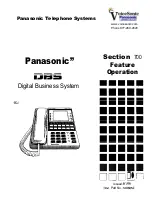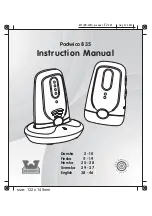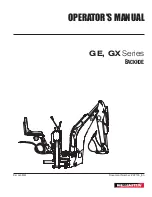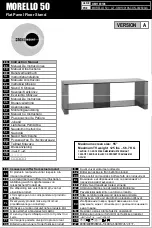
En
glish – Pa
ge 69
De
ut
sc
h – S
ei
te 6
7
English –
2
Technical data
Charger
Standard charger
(36–4/230)
Compact charger
(36–2/100-230)
Fast charger
(36–6/230)
Product code
BCS220
BCS230
BCS250
Rated voltage
V~
207 to 264
90 to 264
207 to 264
Frequency
Hz
47 to 63
47 to 63
47 to 63
Battery charging voltage
V=
36
36
36
Charging current (max.)
A
4
2
6
A)
Charging time
– PowerPack 300, approx.
hrs
2.5
5
2
– PowerPack 400, approx.
hrs
3.5
6.5
2.5
– PowerPack 500, approx.
hrs
4.5
7.5
3
Operating temperature
°C
0 to +40
0 to +40
0 to +40
Storage temperature
°C
+10 to +40
+10 to +40
+10 to +40
Weight, approx.
kg
0.8
0.6
1.0
Protection rating
IP 40
IP 40
IP 40
A) The charging current is limited to 4 A for the PowerPack 300 and for Line batteries.
The specifications apply to a rated voltage [U] of 230 V. These specifications may vary at different voltages and in country-specific models.
Operation
Start-up
Connecting the charger to the mains (see figure A)
u
Pay attention to the mains voltage.
The voltage of the
power source must match the voltage specified on the
rating plate of the charger. Chargers marked 230 V can
also be operated at 220 V.
Plug the device connector
(3)
of the power cable into the
device socket
(2)
on the charger.
Connect the power cable (country-specific) to the mains.
Charging the removed battery (see figure B)
Switch the battery off and remove it from its holder on the
eBike. When doing so, read and observe the operating in-
structions of the battery.
u
Ensure the battery is placed on clean surfaces only.
Avoid getting dirt, e.g. sand or soil, in the charging socket
and contacts in particular.
Plug the charging connector
(5)
of the charger into the
socket
(6)
on the battery.
Charging the battery on the bike (see figures C and D)
Switch the battery off. Clean the cover of the charging
socket
(7)
. Avoid getting dirt, e.g. sand or soil, in the char-
ging socket and contacts in particular. Lift the cover of the
charging socket
(7)
and plug the charging connector
(5)
into
the charging socket
(6)
.
u
There is a risk of fire due to the charger heating up
during charging. Ensure the battery on the bike is
completely dry and placed on a fireproof surface be-
fore charging.
If this is not possible, remove the battery
from the holder and charge it in a more suitable location.
When doing so, read and observe the operating instruc-
tions of the battery.
Charging process for two batteries
If two batteries are fitted to an eBike, both batteries can be
charged using the uncovered connection. To begin with,
both batteries are charged one after the other until they
reach approx. 80–90 % capacity, then they are both fully
charged at the same time (the LEDs flash on both batteries).
When the bike is in operation, power is drawn from both bat-
teries on an alternating basis.
If you take the batteries out of the holders, you can charge
each one individually.
Charging process
The charging process begins as soon as the charger is con-
nected to the battery or charging socket on the bike and to
the mains.
Note:
The charging process is only possible when the tem-
perature of the eBike battery is within the permitted char-
ging temperature range.
Note:
The drive unit is deactivated during the charging pro-
cess.
The battery can be charged with and without the on-board
computer. When charging without the on-board computer,
the charging procedure can be observed on the battery
charge indicator.
When the on-board computer is connected, a charging noti-
fication appears on the display.
The state of charge is displayed by the battery charge indic-
ator
(9)
on the battery and by the bars on the on-board com-
puter.
The LEDs on the battery charge indicator
(9)
flash during the
charging process. Each solid illuminated LED represents ap-
0 275 007 XCX | (13.03.2020)
Bosch eBike Systems




































